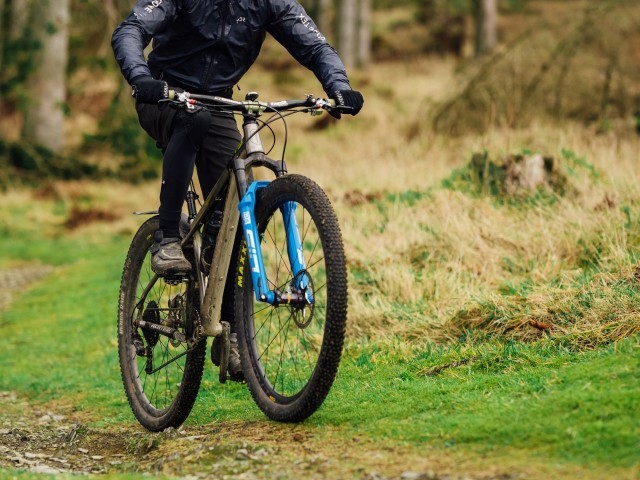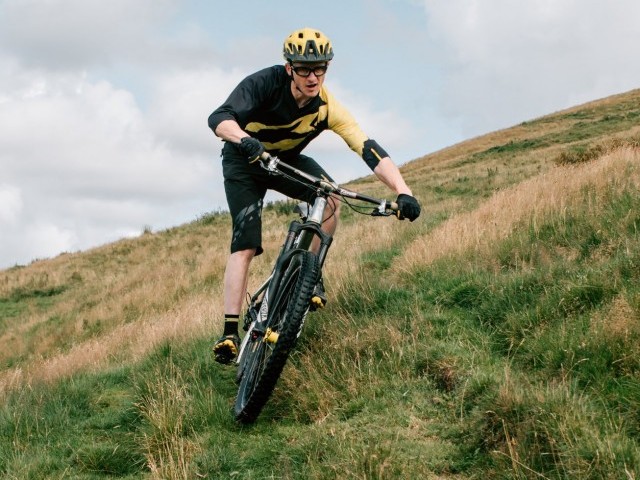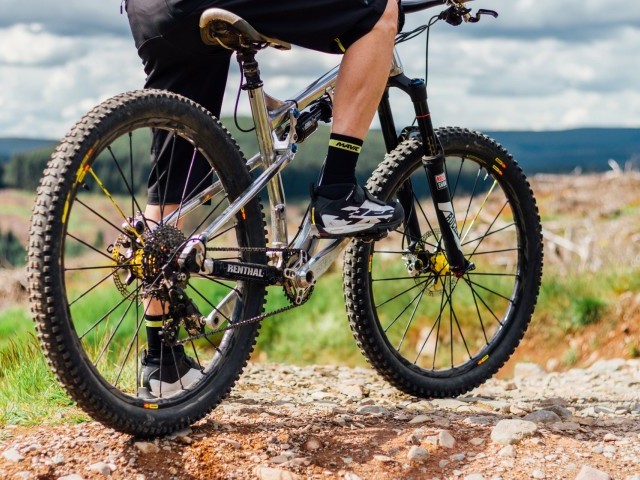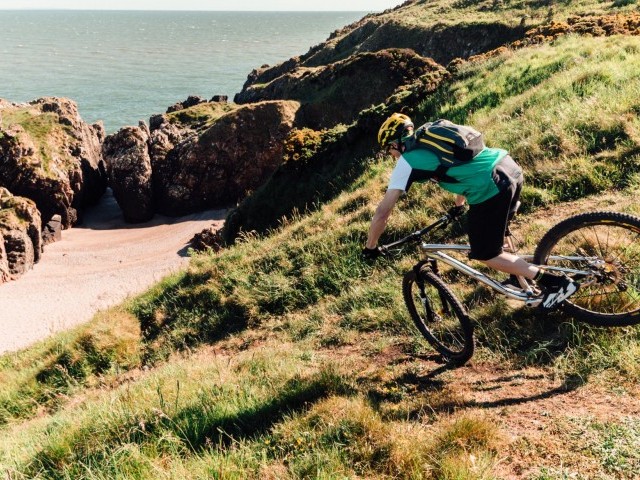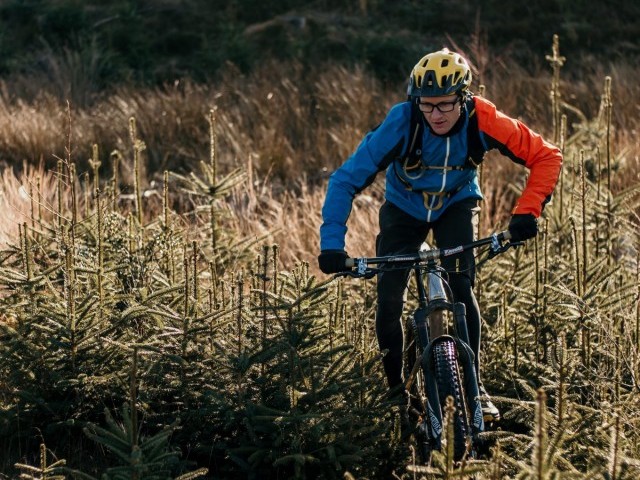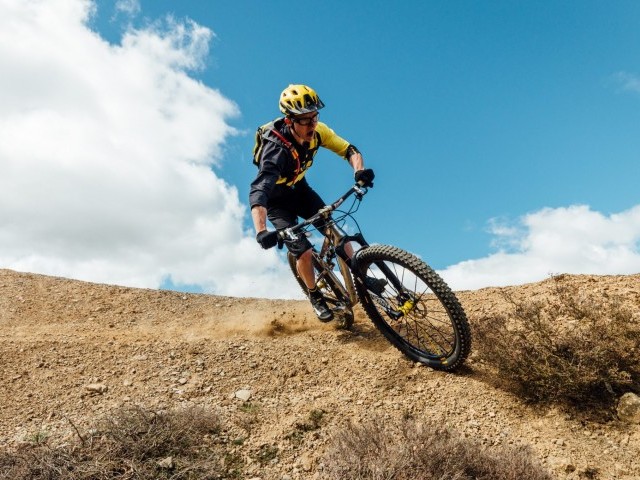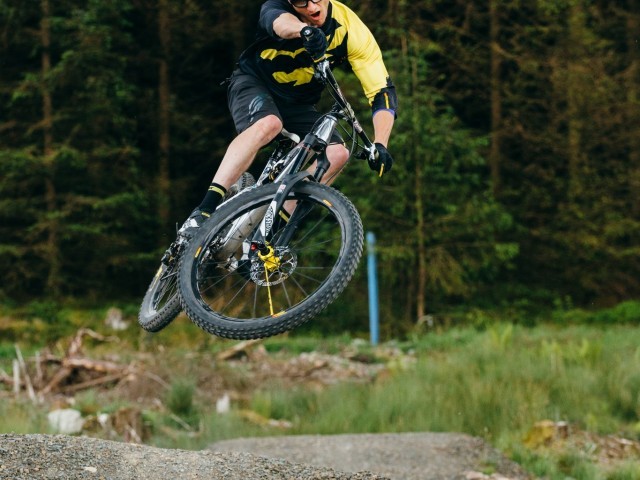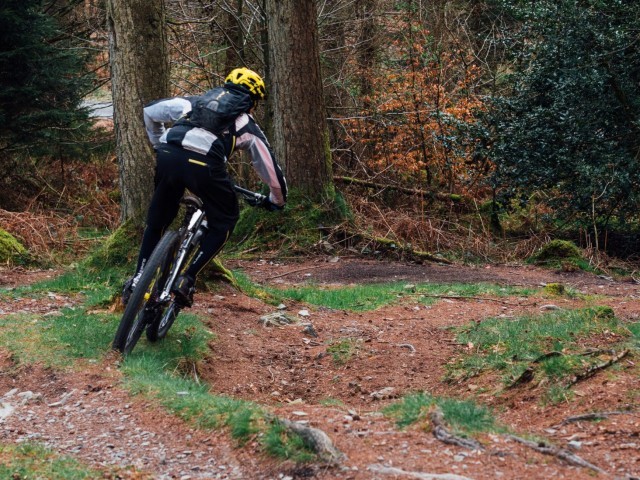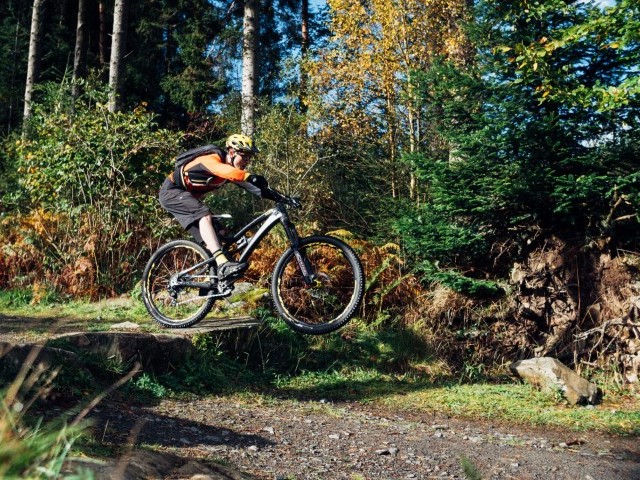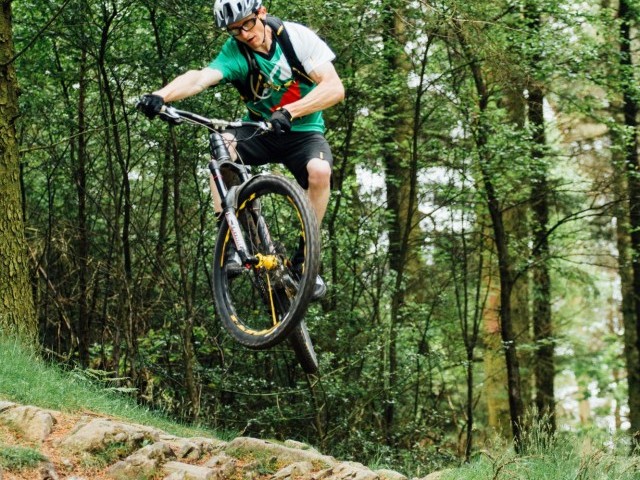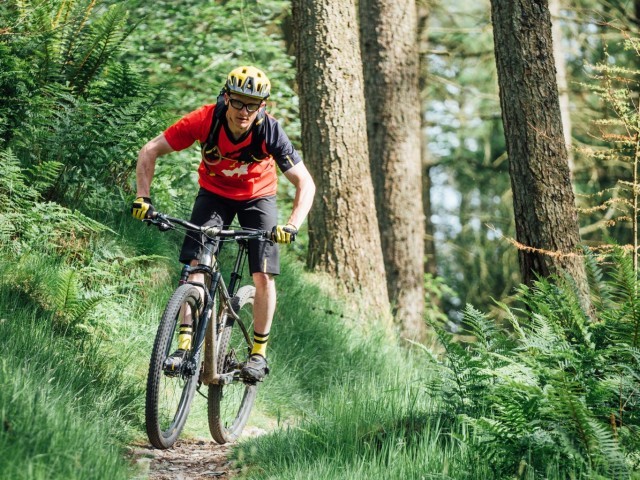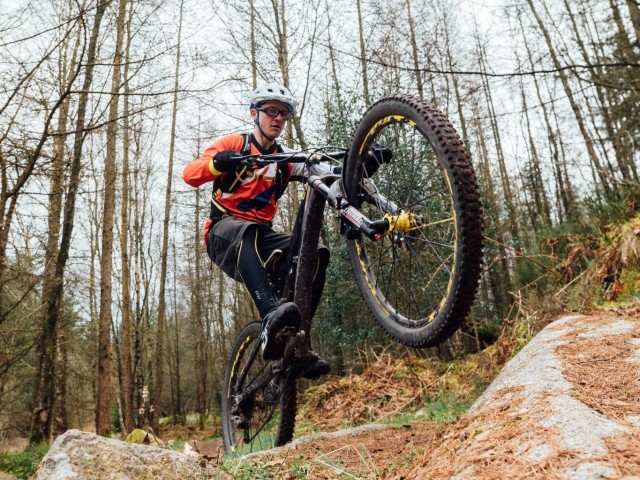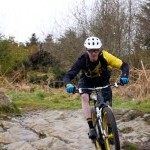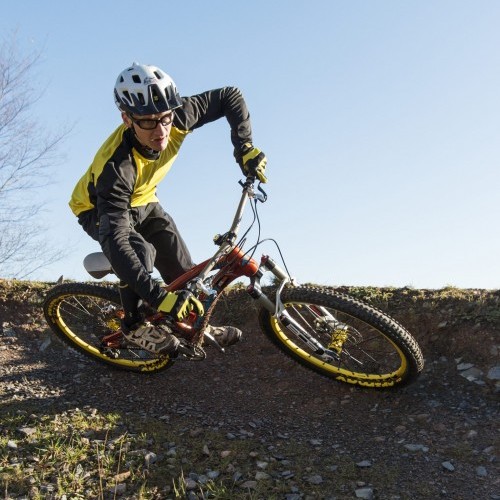
Speed Control Part 1 – Shifting Gears
Technique / Skills
Finding flow on a trail or maintaining a rhythm is down to a combination of things, speed control plays a major factor in descents, in climbs and on all the bits in between. This time we look at shifting and the impact of cadence on your ride.
Often overlooked in skills instruction, and something we should never let slip, is the process of shifting gear to match the trail speed. In old money, we are talking gear inches, forwards progression per revolution of the cranks.
In automotive circles, companies boast about BHP, the power of the vehicle - Torque & Revs. Similarly, we produce power measured in watts, and they enable us to spin the cranks at the desired RPM. Engines are all about this balanced equation, and maximum BHP is produced in a sweet spot where revs and torques can be sustained.
Just like engines different human frames and muscle types work differently, some of us are light block small cubic capacity 1000cc machines that like to rev and others are big block diesels that use low down grunt (torque) to propel forwards at low RPM. Unlike engines, though we are pliable and can train our system to either drive larger loads around or deliver a higher rate of speed, resulting in the deadly combination of improved overall trail speed and endurance.
As with most things in mountain biking there is for all of us a sweet spot and a preferred approach, we are creatures of habit, and sometimes this locks us in, and progression slows or stops because of certain constraints. Fitness and technique are at the core of proficient mountain biking; you may have the lungs but not the legs and vice versa. These features should give you some food for thought in how to mix up your riding style to maximise your riding potential.
Back to gears and the pros and cons of the various ways in which to address them. Using high revs and spinning is fine but only if you're in a gear large enough that you are actually making some forwards progression, likewise burning some diesel and grinding along in a massive ratio is only worthwhile if you can sustain it for the duration.
I spend a lot of time on trails in one capacity or another and get a good chance to see the various riders and how they address the trail. Watching the newer riders on their 1X 10 and 1X 11 set ups many seem to have miss interpreted the ‘spin to win’ philosophy, revving like mad but not really going anywhere. Perhaps they have misunderstood the riding technique theory of early suspension bike; it used to be said that to reduce pedal influenced ‘bobbing’ you are supposedly better to sit and spin rather than stand and stomp. Not strictly true and should be filed in the same place as the other misconstrued phrases like ‘get your ar*e out the back’.
Spinning like Armstrong only has real value if you’re strong enough to drive around a decent size ratio and progress up the trail. Just like engines we burn fuel, we need to be efficient and avoid burning excess fuel by over revving. Likewise, we also need to avoid labouring (revving too slow pushing large gears) as this wastes fuel too.
Unlike road riding it's not as essential to maintain a constant RPM unless you're on a long endurance haul, it can actually work against us. The constant gradient changes and dynamics of mountain biking mean we have to hammer at rough ground and punchy climbs, we may need to use more torque to get better traction on slippery and loose surfaces or to help carry speed in sections. Sometimes the nature of the terrain means the last couple of revolutions of the cranks require an inevitable laboured effort to turn around as you summit a steep little rise.
On that particular point of cresting features and speed control if you have ever encountered the ‘teeter totter’ wobble as you pass over a large crag or steep little bank then you can deconstruct those moments and conclude you did not commit to the feature and carry enough speed on entry. If you go back to that problem passage and have another go, simply hammer at it harder and faster, don’t be shy for its easier to squeeze the brakes and scrub some speed as you crest the summit too fast than have to put in a pedal stroke!
Trying to pedal at this crucial point will ruin your stability and open up the potential of the pedal/crank striking the trail, having ridden at the feature with a bit of gusto you will probably also discover your coincidentally in the wrong gear also and the revs/torque numbers are stacked against you.
Equipped with a wide range cassette and lots of ratios to choose from it's important where the trails are undulating to maximise the use of our gears to help carry speed from the downslopes into the rises in the trail. You may have to accelerate in an uphill gradient of off from the flat to assist with carrying good speed up the next section of trail. As the angles work against us, we need to drop down through the gears one by one as the load through the legs increases.
All too often riders get to the bottom of a ramp and simply drop into a low gear before the gradient really kicks in, the result is a significant loss of speed and an inevitable grind up a rise, just in a low range gear moving at a snail's pace. On the flip side, those that fail to shift end up grinding up ramps and rises and it can result in a failed attempt at clearing a section. The sweet spot is that middle ground where we judge through the feeling in the legs and let them decide when to shift.
Now there is a catch here, if the lungs and other essential processes in the body are not capable enough to keep up then we can’t recover from that effort and go again. We burn out and power drops off, balancing this for the duration of a section is one thing and doing it for the whole ride is another. For all of us there comes the point where muscles burn, or our heart punches through our rib cage, and the brain sends a signal to the thumb, and we start the process of running out of gears.
Pacing is essential no matter how long the ride lasts or what type of ride it is; even World Cup Downhill racers understand pacing is key to optimising performance. If your running out of diesel at the end of a ride maybe you started too fast, you may not have taken on enough fuel before or during your effort.
Fuel is key, small and often. There are clever calculation for sports performance, and everyone should put some time into research these things even if your not performance driven and gunning for results, drinking and eating right are key to living long healthy and happy lives. Fluid is calculated in millilitres vs. body mass in kilogrammes, and similarly food is calculated against body mass. You should be eating every 40 minutes a specific amount of carbs (including sugars), proteins, etc.
To give you a rough idea how to calculate your intake the following was calculated for me by one of the guru’s at Sport UK. I weigh in at 59kg, and I drink 500 to 750 ml per hour (for calculation purposes I measure out at 500ml to match my 40 min eating regime). For food, I need to take on between half and 3/4 of a regular size nutrient bar, or the equivalent; this could be a banana, a handful of mixed nuts and fruit, some chocolate. Find out what foods work for you and sit well in the belly and stick with it.
Back to gears and pacing, standing up on the pedals will increase leverage but is only sustainable for short periods as the legs are then supporting the weight of the body as well as driving us forward. At higher speeds, it's also less aero efficient and works against us, but we'd have to be travelling at a fair rate of knots for this to be a concern and added wind resistance only really comes in on mellow gradient climbs for those hauling along.
Off road riding requires us to be independent from the bike, skimming/hovering in the saddle lifting up out of it to enable the bike to rise onto bumps and lumps or staying at the same height to allow the bike to drop into the holes so as to aid us in rolling forward. The process of being planted in the saddle, hovering and just lifting the bum up enough to allow the bike to roll up onto bumps is a constant operation unless of course, the trails are pan flat and super smooth.
Physiology will to some extent determine what approach you take to climbing and the cadence you use; it's worth experimenting and helping your muscles develop the twitch they are lacking, be it the slow, strong style or the high speed flat out revving approach. Remember you may benefit from spinning, but you need the torques to drive around a sensibly sized ratio. You can use your gears to give you a weight training session on a ride or a spinning class.
Psychology plays a significant role in off-road riding, having the confidence to commit to technical passages and being ‘on your game’ can make all the difference. Try to avoid being demoralised by ramps and climbs in the trail, a good positive mental attitude towards going up can contribute to making lighter work out of climbs.
Here in the UK genuine ‘monster’ climbs are a rare thing, sure we have some steep gradients we can hunt out but nothing that goes on for hours on end, try and mentally shrink the hills by breaking the trail down into bite size chunks. Plan to push harder in places and recover in others, hold that gear for just a little longer before dropping down a cog into an easier gear. Be mindful of what gear you are pushing where and you can easily monitor your performance (fitness) gains or losses!
Don’t be shy of shifting under load either, if your gears are indexed correctly you only have to reduce the pressure ever so slightly to get a clean change, timing is the key. Poor shifts that occur under load, the ones that sound messy or result in equipment failure, are a result of poorly adjusted and or worn parts, combine them with a very low cadence (high torque), and you do not enable the profiled sprocket to lift the chain up in time. The chain becomes stressed as it drags on the sprocket and jockey wheel waiting for that little ramp to move just enough that it will claw its way up not the larger sprocket.
We are back to that sweet spot, there is a point in the drive where gears just want to blend together sweetly, and shifts are natural, how many of you have ever looked closely at the relationship between crank position, sprocket profile and chain movement between sprockets while shifting? It's worth getting the bike in the stand and putting the drive system to work and observing where and how things line up; this will help you better understand when and where in the pedal stroke is a good time to get that derailleur moving.
Remember gear shifting isn't instant, there is a small delay from the actuation of the lever to when the derailleur starts to move, and the profiled sprocket starts to ride the chain up (or drop it down) onto the next sprocket. Always look up the trail and pre-empt the changes in gradient and speed so as to time your shifting to match.
That brings us onto shifting while descending quite nicely. Shifting is necessary everywhere, matching gears to trail speed in descents will help you exit corners faster with added traction, you will be set up for that next section with no fuss or bother.
Often the gradient just drops away, and we start to coast down the trail, freewheeling with a trail speed far greater than that we had when last driving the cranks round. When this occurs its time to pre-empt when you will be pedalling next and select a ratio that will give you engagement without grinding or spinning.
This can sometimes mean we have to rack off three or four gears and get a sneaky half pedal stroke or a couple of full rotations of the cranks so that gear is pre-selected ready for the next concerted effort on the drive. If we don't have drive when we next rotate the cranks, we are missing that all important forwards progression, essentially pedalling without cause and gradually slowing from all the forces tugging at your trail speed.
Frequent shifting and timing that shifting is key to maintaining good speed, as ever, practice practice practice and you will improve. Remember, there is no substitute for time on the bike. I leave you with the words of an elderly Welsh farmer who shared this gem of wisdom with me as I slogged my way up a wet hillside some years ago chasing my mates “it's easy boyo, just push one pedal down and the other comes up”.
This technique article was in Issue 48 of IMB.
Related
By Clive Forth
Clive Forth is a rider who has been there, done that, got the t-shirt and cleaned his bike with it. He has grown with the UK scene and technological developments for the last 30 years and has competed at all levels in all disciplines riding for some prestigious brands along the way. Always looking for that extra edge with endless passion and drive he is geared up to bring you the inside line on all aspects of mountain biking skills and technique.
























